The Polaris pressure cleaner revolutionized automatic pool cleaning when it was introduced in the early 70’s.
Before then, pool cleaners were really just ‘stirrer-uppers’; they didn’t actually vacuum the pool. Polaris took the booster pump design advanced by Arneson, and attached a pool cleaner with a venturi vacuum.
The nation’s largest pool builders began offering a choice of a vacuum cleaner line, or the newer, pressure cleaner line. Anthony Pools installed thousands of “Antho-Sweep” cleaners, a private labeled Polaris 180.
Today’s post is about installing a Polaris pressure cleaner on an inground pool – where none has existed before. In a nutshell, installing a Polaris cleaner involves 3 Steps:
- Install or Convert a dedicated cleaner pipe
- Wire up the booster pump to a Timeclock
- Cut the Polaris hoses to proper length
DEDICATED POLARIS CLEANER LINE
Dedicated simply means that the pipe is used only for one purpose, to connect the pool cleaner. You need a pipe (or hose) that carries water from the booster pump to the cleaner.
Converting a Suction Cleaner Line: Older pools, or pools in a suction cleaner market (Hi, Florida!), may have a dedicated suction cleaner line that brings water into the filter pump. By cutting and capping the pipe that goes into the pump, and redirecting the pipe to connect with the Polaris booster pump, you can convert the suction line into a pressure line.
Converting a Jandy Ray-Vac Line: Sylvan pools and others often installed a low-pressure pool cleaner line, after the pump but before the filter, with a 3-way valve to divert water through the Energy filter and to the Jandy Ray-Vac pool cleaner. Cut out the Energy filter and cap the pipe after the 3-way valve. Install a Tee fitting in the pool return pipe, after all other equipment, and after any spa jet line, to supply the booster pump with water.
Installing a New Dedicated Cleaner Line: The first thing to do is to call811, and have a guy come out to mark the property for underground utilities, so you don’t hit any power or gas lines.
Dig a Trench: After underground utilities are marked, trench from where the booster pump will be located on the equipment pad, to a point midway along the longest wall of the pool. From the edge of the deck to the pool, you can either go under the deck and thru the pool wall, or over the deck hose installation.
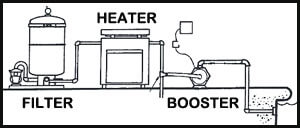
Thru the Wall: For this method, you continue the trench underneath the pool deck, digging a tunnel beneath until you reach the wall. Then use a rotary hammer drill with a 7/8” bit to drill through the pool wall to the other side. Slide a ¾ inch PVC pipe through the wall with a ¾” threaded female fitting on the wall side. Chip out the wall on both sides so that you can make a thick, rounded patch around the pipe on both ends. Inject an epoxy sealant around the pipe on both sides of the wall, and then pack it at least 1” deep and 4” wide with hydraulic cement. Finish around the pipe with pool plaster mix on the pool side.
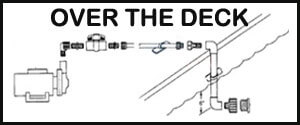
Over the Deck: For this method, stub the pipe up out of the ground next to the pool deck, and use a 90° fitting just above the height of the pool deck. Using quick connect garden hose fittings, attach a short length of 3/4″ HD garden hose, to run across the deck. On the pool side end of the hose, a garden hose adapter and Polaris G-9 adapter is used to connect the Polaris cleaner.
WIRE BOOSTER PUMP TO TIME CLOCK
For the Polaris pressure pool cleaner to be fully automatic, one of it’s best features, you wire it to its own timeclock, which is powered by its own 15 or 20 amp breaker. If you have a 100 amp sub-panel (small grey breaker box) at the equipment pad, you probably have enough juice to add a new breaker.
From the booster pump breaker, wires connect to the time clock, and from the timeclock, wires connect to the booster pump. Wires must be encased in conduit with proper connection fittings, and the booster pump must be connected to the bare copper bonding wire. An electrician should perform the work, or at least certify that your work meets local codes. See the Polaris booster pump owner’s manual for specific wiring specs.
The booster pump timeclock should be programmed or set to turn on the pump, only within the time that the filter pump is operating. In other words, the filter pump should always be running, when the cleaner booster pump is running. Most Polaris pool cleaner timers are set to run about 2 hours per day.
SIZE THE POLARIS TO YOUR POOL
Polaris cleaners come with 32′ of hose, which is more than is needed for most pools. To prevent tangling and improve performance, excess hose is cut-off or trimmed.
The first step is to cut the 10′ section of hose that attaches to the pool cleaner, to the depth of your deepest part of the pool. You can measure your pool depth with a Tele-Pole, and then cut off any excess. In other words, cut the clear hose to match the depth of your pool.
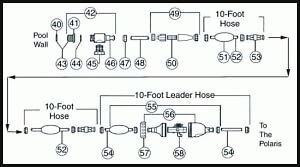
With the hose connected to the wall and the cleaner, stretch out the hose to the furthest point of the pool, and mark the point on the hose. Remove equal amounts of excess hose from the second and third 10′ sections to total the amount of extra hose. Slide the hose floats down and reconnect hose swivels, with arrows in direction of water flow.
It’s a bit of work to install a Polaris pressure pool cleaner where none has existed before, but not impossible! If you want the best performing pool cleaner, you have to work for it, I suppose.
Or call your favorite pool service guy to install your Polaris Pool Cleaner. You’ll save hundreds buying it online, and he’ll be glad for the extra work.

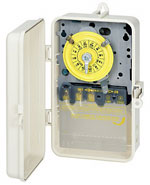

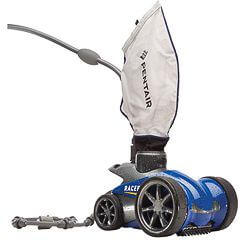
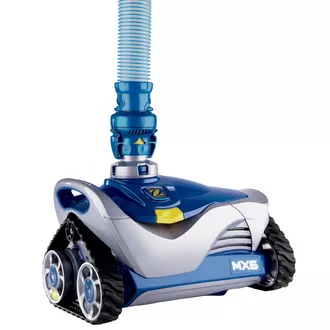
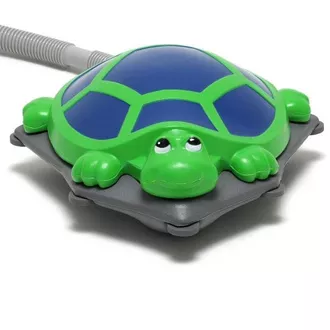

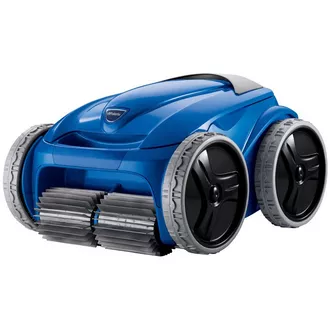

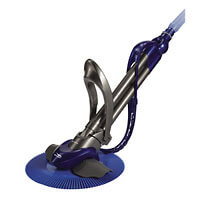
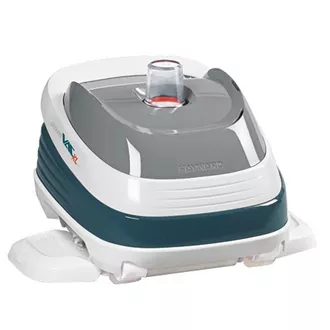
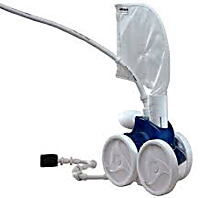

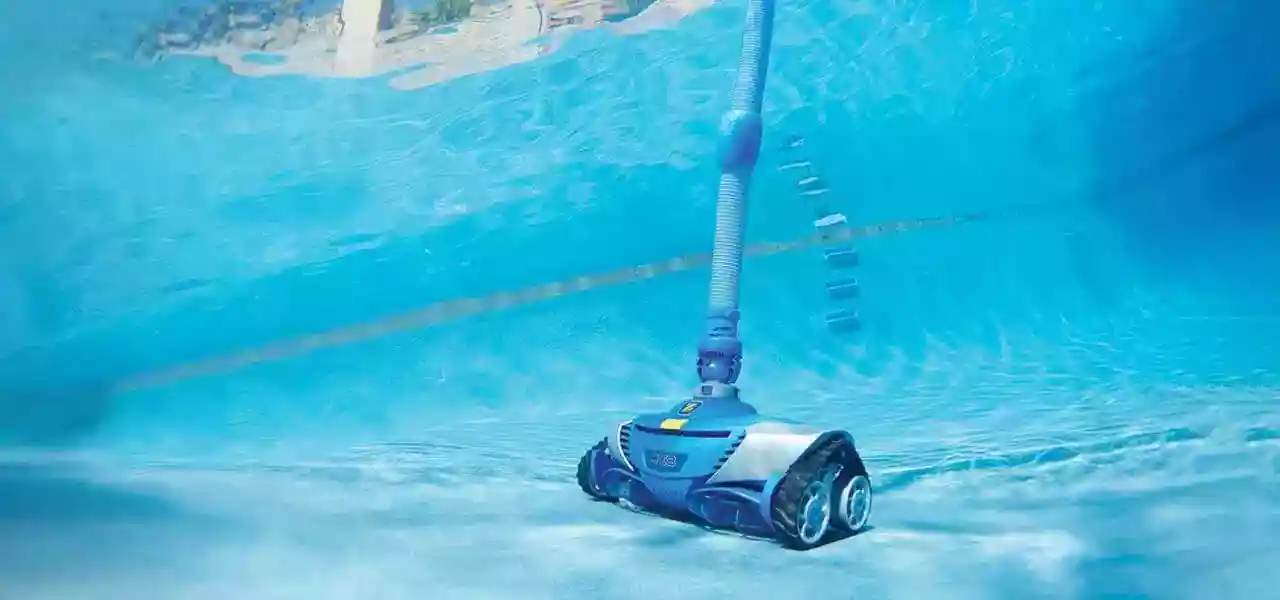
When installing booster pump between filter and chlorinator, what recommended distance from chlorinator should the tee for booster pump be located?
Mark, as far as possible! Ideally, the chlorinator would be at ground level, and the Tee to feed the booster pump would be 6-12″ off the ground, to prevent the chlorinator from leaking gas/liquid backwards into the pump. You can also install a one-way check valve between chlorinator and Tee.
Hello! I have a Polaris vac-sweep 280 pressure side pool cleaner it require a booster pump.How do I install a new booster pump to my existing inground pool equipment?
Hi Brian, this post above talks about how to install a booster pump where there was not one before – essentially, you install a Tee fitting after the filter and heater if you have one, but before any chlorinator, if you have one. The tee fitting is installed into the return line, with the side port pointing down, or toward the location of the booster pump. This port is then reduced in size from 1.5″ or 2″ (your pipe size), down to 3/4″ female threaded, using a PVC reducer bushing. Then you can use the hose kit that comes with the booster pump, and connect the hose from the tee to the incoming (center) port of the pump. On the effluent side of the booster pump, or the outlet, use the 3/4″ supplied hose and fittings (use Teflon tape on all threaded connections), to connect the pump outlet to the dedicated cleaner line, or the PVC pipe that carries water to the Polaris 280. If you dont have a dedicated cleaner line, you can run a pipe outside of the pool deck, and then use a hose to skirt across the deck, and over the edge of the pool coping, to connect to the cleaner, as described here in this post.
Hello! I’m looking to upgrade my Polaris 280 pool vacuum to a newer unit that does not require a booster pump. How would I go about converting the plumbing to support a boosterless 380 model? Thank you,
Hi Billy, if you want to use the Polaris 360, which does not require a booster pump, it’s not too hard. Remove the pump and hoses or pipes, and replace the Tee fitting on the pool return line, with a 3-way valve, and new PVC plumbing (1.5″) to connect to the pipe that leads to the wall fitting. To operate the cleaner, you will turn the valve to send enough water to the cleaner (valve will be about half closed), to generate about 17 psi, finding a sweet spot where the cleaner is not too fast, not too slow.
Does anyone have any brochures or pictures of the old Antho-Sweep system?
The above doesn’t seem to apply to a pool with a liner
Hi Scott, most vinyl liner pools use a suction cleaner or a robotic cleaner, Polaris cleaners can be used also, but over years of (over)-use, it may cause well worn paths to fade in some vinyl. This could be overcome by running the cleaner only when needed, only for as long as needed, and reducing the speed at which it normally travels, by releasing pressure before the cleaner.
Hi I want to use my old ray vac connection on my pool wall to install a fountain.. not sure where to start, any advice would be helpful..
Cheers Des
Hi Des, sure, that’s a 3/4″ connection at the wall, female threaded? Most of our floating fountains will connect to that size, with included adapters. You can also find a 3/4″ NPT x 3/4″ GHT adapter, to connect a garden hose to the wall. Now suppose you want to connect a poolside frog or urinating boy statue or something on the edge of the pool, to spray into the pool, you could connect the garden hose and run it up out of the water and into the statue, and use the valve (at the filter) to control flow. If you want to hide it completely, you could cut the concrete deck right over the wall fitting, and insert a tee fitting with a pipe that comes up above deck level, with a 3/4″ valve, and then fill the area with new concrete or just gravel. From this point (after the valve) you can connect flexible tubing, 3/8″ or 1/2″ to run into the frog or whatever. Plug the wall outlet, but don’t abandon it (cut it off or fill it in), in case in the future a pool cleaner is wanted again (Polaris 360 works great on a Ray-Vac connection).
What is the typical cost of converting a suction side to a pressure side?
Hi Andrew, to convert a suction side vacuum line to a pressure side pool cleaner line… there’s $25 in plumbing parts, plus 30-60 minutes of labor to cut, reroute and reconnect pipes. So that could be $100 or so if you paid someone to do it. If you want to add a pool cleaner booster pump and timeclock to the job, that’s would be much more, perhaps 2-3 hrs total labor, plus electrical wiring cost for pump ($100?), pad for the pump to sit on, if room is not available on existing pad.
What parts are needed to run an above ground (over the deck) Polaris line?
Hi Andy – LOVE this question! The best way to do it is to run a 1.5″ PVC line from the equipment pad, to a stub-up at the edge of the pool deck, with a 90 fitting that sits just millimeters above the pool deck. Reduce the 90 fitting to 3/4″, using a 1.5″ x 3/4″ reducer (slip x female thread). Install a valve on one or both ends of the pipe, a simple 2-way ball valve, so you can shut off water easily when needed. If you are in northern climates, run the pipe trench at a 24″ depth (call 811 before you dig!), or 12″ deep if in warmer climates. Now for the across the deck part. I like to use heavy duty 3/4″ garden hose, so it can be pulled to the side of the deck. You will need two 3/4″ NPT x 3/4″ GHT (national pipe thread and garden hose thread) adapters, two brass female garden hose ends, and for the pool side/cleaner connection end, a 3/4″ FIP coupling, (with female threads inside), and a G-9 Polaris fitting, a 3/4″ x 1.5″ adapter, to connect the UWF at the end of the cleaner hose. You can also use 1″ or 3/4″ pipe to reduce cost, or use 3/4″ HD hose all the way from the pump to the cleaner, but Polaris recommends 1.5″ pipe where possible. All parts can be found at any home/hardware store, except for the G-9 Polaris adapter. Let me know if you have other questions regarding…